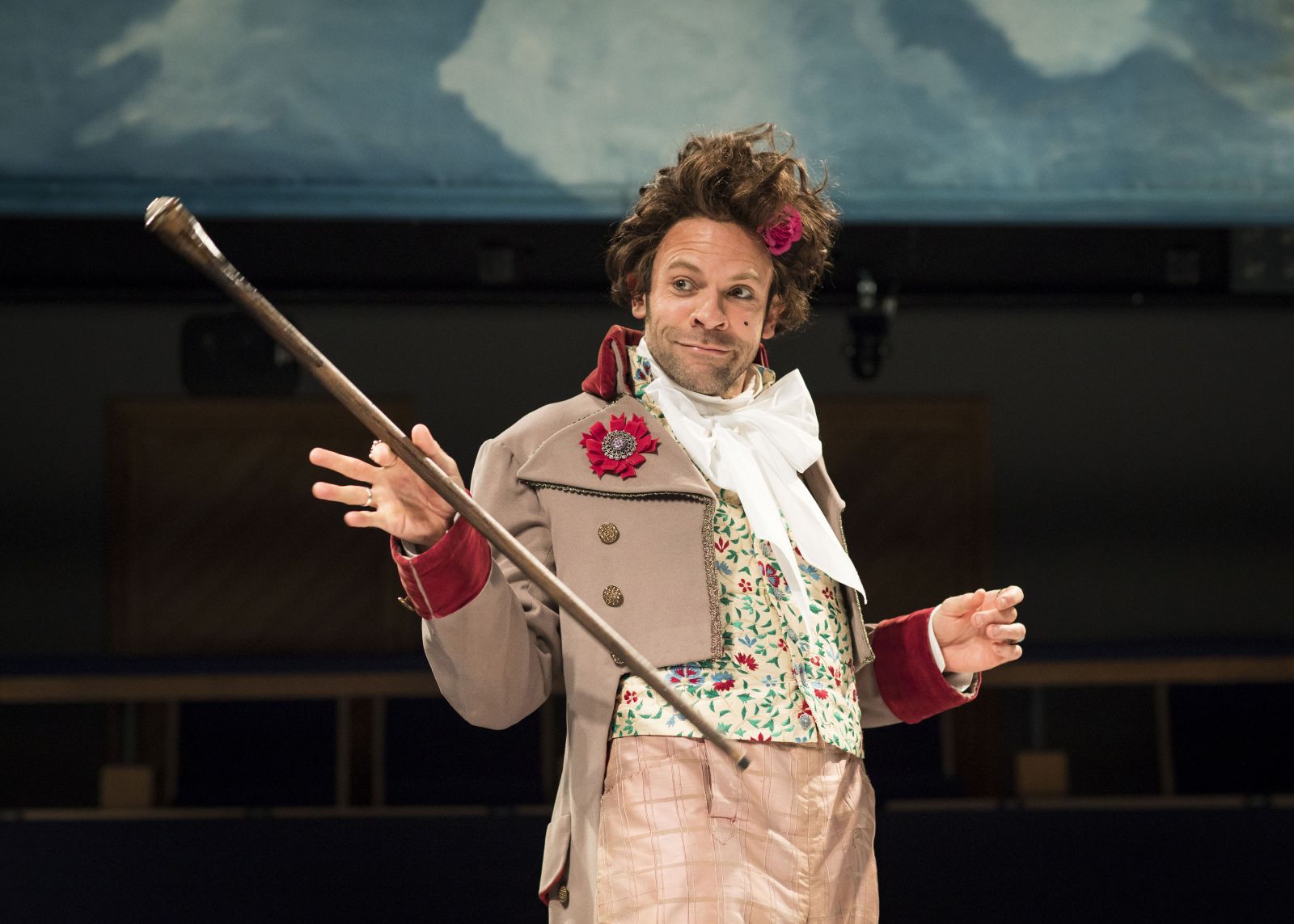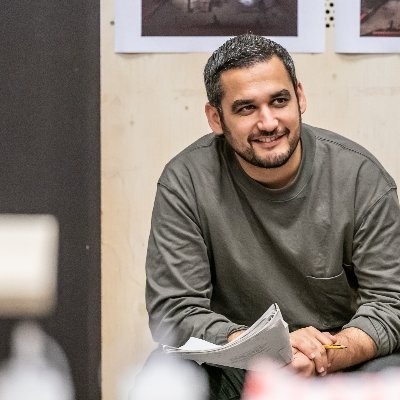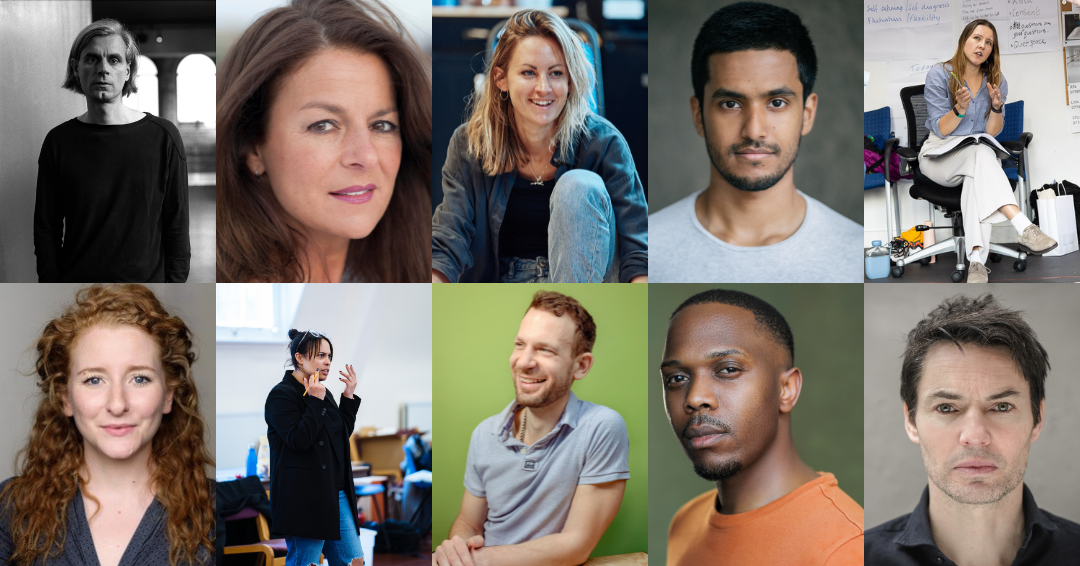Designer Simon Daw has worked with Director Paul Miller on productions for over 15 years. Here he talks about the process of design.
What was your first experience of going to the theatre?
My first theatre experiences were watching Christmas shows at the Nuffield Theatre Southampton but it was probably a show by the Catalan company La Fura del Baus that I saw while at Art School in Glasgow that really awakened me to the tremendous power of live theatre. It was a very visceral promenade piece that turned what I thought theatre could be upside down — space was used in a very sculptural way constantly redefined in front of us, intimate and totally immersive.
What was it that sparked your interest in theatre and in design in particular?
My background was in fine art photography but all the work I was making was pretty complicated involving many different disciplines, I was making work such as an installation that involved freezing audio speakers inside blocks of ice that would slowly melt until reaching a climatic destructive ending. So the liveness of these events became increasingly important and this combined with a growing desire to collaborate with others to make works on a greater scale than I could as an individual artist. When I met a designer in Glasgow who was looking for someone to assist them it felt like a really natural progression.
How do you begin any design process?
If it is a play (as opposed to a dance or devised piece, where the process differs) the process starts with the script. On first reading I try to concentrate on the atmosphere and themes of the play before returning to focus on the detail of specific objects and costumes that are required. I then start sketching and working in a scale model of the theatre to test out ideas in three dimensions.
How do you work with other members of the creative team?
My work with the director runs throughout the process and can range from conversations about the period in which the play will be set to the characters and costume. Lighting is crucial in bringing designs to life so discussions with the Lighting Designer tend to start as early as possible followed by collaborations with the Sound Designer and Costume Supervisor.
Do you enjoy designing sets that are literal or those that are perhaps more expressionistic, or does it just depend on the project?
My design process involves distilling all the potential elements that could form the design into the essential ingredients that support and expand upon the narrative. With some plays everyday life naturally leads to a kind of realism but with others it might feel that we need to heighten the design and push it towards something more expressionist. I particularly enjoy it when a play allows the possibility for us to riff off the themes expressed in the play to create a space that moves beyond literal representation to something more poetic.
When did you first work with Paul Miller?
I first worked with Paul in 2001 designing Will Eno’s Tragedy: a Tragedy at the Gate in Notting Hill. It was one of my first professional design jobs, we reconfigured the space in quite an unusual way: the design consisted of a very long glowing rectangle suspended in a black void surrounded by a pure white frame. I’m still very fond of it because it was a great collaboration and probably my first design where I really started to refine my own style of work.
Do you find you’ve developed a way of working together, or a short hand?
The joy of working with long term collaborators is that you build a shared taste for what you like and have many points of past reference to refer to when discussing the detail of what things will look like.
Is there a favourite production you’ve worked on together?
I’ve enjoyed many of them for different reasons so it’s very difficult to choose… I loved the sweeping scale and diverse worlds that we created for The Winter’s Tale at the Crucible in Sheffield.
What are the challenges of the OT’s space?
The small size of the stage and entrances are one of the greatest challenges particularly if the play is set in multiple locations that require changes to the set and furniture. But these restrictions often result in a more rigorous approach to the elements of the stage; every piece of furniture, prop and part of the set is interrogated to ensure that it is serving its role and supporting the narrative.
The intimate nature of the space means that props, costumes and wigs need to be more detailed than would be required in larger theatres — there is nowhere to hide in this space!
Are there also things you find particularly liberating about the space or features you particularly like?
I love the way that I’m always discovering new angles of viewpoint as I move around the auditorium during the tech and previews. The perceived limitations of the space creates challenges that I’ve really enjoyed confronting; it is very satisfying when we find an alternative way of making the space work for the play. An example is the way the ceiling piece in The Philanderer made the space feel much larger, or how adding posters to the walls of the space in Sheppey created a different layered perspective and made the space feel even more inclusive for the audience on the upper level.
Are period plays trickier than contemporary plays and how do you do your research?
I very much enjoy the process of researching a period that I haven’t designed before and the treasure hunt for unusual details that often inspire new directions in the design. In some ways defining the design elements for a contemporary play can be just as challenging as often people have strong opinions of how they think the nuances of things should be. Increasingly museums such as The Met and The V&A are digitising their collections so a lot of brilliant research can be done online. With some work, such as with the DH Lawrence plays that we designed (The Widowing of Mrs Holroyd at the Orange Tree and The Daughter-in-Law at Sheffield Crucible), Paul and I visited the houses where Lawrence grew up near Nottingham. This was crucial to helping us understanding the detailed action and layout of the rooms Lawrence had in mind when he was writing those plays.
Can you talk about the ideas behind your design for The Lottery of Love?
We wanted to create a design where the fluidity of action would be allowed to move unencumbered by furniture or the trappings of everyday life. I wanted to create a glowing, magical, romantic space that supported the period without feeling confined exclusively to the Regency era.
THE LOTTERY OF LOVE by Pierre Marivaux, in a version by John Fowles, was staged at the Orange Tree from 30 March – 13 May 2017



